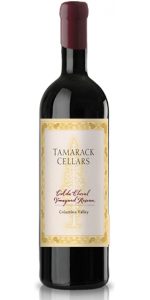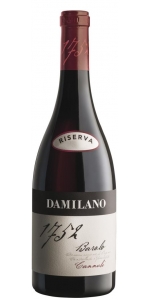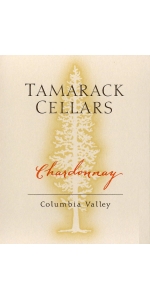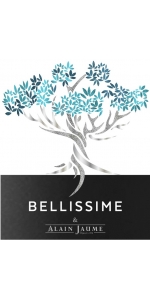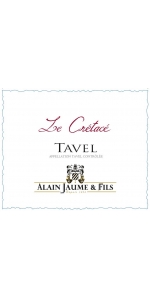Tamarack Rose of Mourvedre 2013
| Country: | United States |
| Region: | Washington |
| Winery: | Tamarack Cellars |
| Grape Type: | Mourvedre |
| Vintage: | 2013 |
| Bottle Size: | 750 ml |
Tamarack Ciel de Cheval Vineyard Reserve holds dark and chocolate nauces, spiced with pretty notes of allspice and clove, this wine is round and rich, bursting with ripe berries, combined with an earthy complexity and a velvety finish.
Cabernet Sauvignon makes up half of this blend, with the balance Cabernet Franc, Petit Verdot and Merlot
The wine spent 22 months on 75% new French oak with the remaining 25% second vintage French oak. Select barrels from the best forests of Taransaud, Boutes, Quintessance, and Vicard cooperages.
“1752” is the name of the Damilano Barolo Cannubi Riserva, in honor of the year in which the historic bottle was first marked “Cannubi”. It still exists today perfectly conserved by the Manzone family in Bra, close to Barolo. The bottle is clearly marked as being of “1752” vintage, indicating that Cannubi historically precedes Barolo.
About the Vineyard:
The Cannubi Cru is in found within one of the 6 core zones which comprise a UNESCO heritage site in Italy. A mixture of Tortonian and Helvetian calcareous marl gives the grapes intense aromas of cherry, plum and tobacco, rose and violet in sequence. Its low potassium and high calcium/magnesium content offer the wine a fine and polished touch. The vineyard is located at about 270 m. a.s.l. and has a south-east sun exposure. Barolo Riserva Cannubi 1752 It is a small plot of about 2 hectares of Nebbiolo vines, currently between 30 and 50 years of age.
Tasting Notes:
Garnet ruby red in color, the bouquet is intense and balanced, with notes of violet, red fruit, cherry and plum, spices, liquorice, cocoa, leather and tobacco. Dry, robust, full-bodied, very persistent, rich and velvety
Food Pairing:
This wine is excellent with typical piedmontes pasta (tajarin, ravioli); perfect with red meat, braised and roast meat, game and absolutely ideal with all types of cheeses.
Review:
The purity of this wine is pretty phenomenal with blackberries, strawberries, fresh flowers and licorice. Hints of tar. It’s full-bodied, yet composed and compact with ultra fine tannins and a long, flavorful finish. Very structured. Try after 2024.
-James Suckling 97 Points
Tamarack Chardonnay is made from 100% Chardonnay.
Bright aromas of ruby red grapefruit, mango and stone fruit are found in the bouquet while on the palate, the bright acidity of this wine showcases flavors of guava, crisp Granny Smith apples and Asian pears. Combing the best of both cooperage techniques, the combination of aging in stainless steel highlights the fruit while the aging in neutral French oak provides an added complexity to the wine.
Aged 60% in neutral premier French oak and 3% in new premier French Oak 37% stainless steel.Dropped by gravity straight to the press, the juice is pumped directly to barrel or tank and chilled, inoculated with Chardonnay 3079 yeast, primary fermentation started and finished, secondary fermentation started but completed to preferred taste, typically around 50% completion. All fermentation is done in a 58 degree Fahrenheit barrel room.
Walla Walla Valley Appellation: Alderbanks Vineyard
Columbia Valley Appellation: Bacchus and Gamache Brothers Vineyards
Yakima Valley Appellation: Olsen Brothers and French Creek Vineyards
Alain Jaume Bellissime Cotes du Rhone Rose is made from 50% Grenache Noir, 25% Cinsault, 20% Syrah and 5% Mourvedre
Salmon-pink color, clear and brilliant. The nose is fruity and spicy, reminiscent of wild strawberry and fine Provencal spices. The palate is full, well-balanced and fruity, with a long, fresh finish. A beautiful and delicate rosé.
A part is drawn off the skins with short maceration and the other part is from direct press. Fermentation in stainless steel at cool temperature. Bottling 5 months after harvest.
Alain Jaume Tavel Rose Le Cretace is made from 60% Grenache, 30% Syrah and 10% Mourvedre
Rosé de saignée (bleed technique) with a vibrant ruby color, complex and elegant, notes of crushed strawberries and rose petals.
Tavel Le Cretace Rose gives up vibrant wild strawberry, watermelon, crushed flowers and hints of spice to go with a medium-bodied, layered and seamless profile on the palate. A classic rose from this appellation, enjoy this beauty with food over the coming year or two.
Pair with roasted and/or spicy Turkey, sushi, seafood and grilled fish, Asian food.
Corne Loup Tavel Rose is made from 60% Grenache, 15% Cinsault, 10% Syrah, 15% mix of Mourvèdre, Clairette & Carignan
Elegant, refreshing, food-friendly and versatile, this Tavel offers mouth-watering aromas of strawberry and berry pie.
Corne Loup Tavel represents the pinnacle of the rose pyramid quality wise that can be achieved in the Southern Rhone. The town of Tavel has been famous for its rose wine since the time of the Popes in Avignon (1300's). Tavel is about 2,300 acres in size and produces about 500,000 cases yearly of 9 liter cases, plus can age for 2-3 years, unlike many other roses. Produced from a blend of Grenache, Cinsualt, Syrah, Mourvedre, Cinsault and Carignan, the wine comes from a famous sub-parcel called the Plateau de Vallongue between Tavel and Lirac AOC's.
The 20 hectare-vineyards are located in the hamlets of Oliver, Campet, Vestides and Vallongue. The Tavel from this producer is a blend of all 3 soils types you can find in the AOC:
- Vestides is located West of the village of Tavel. The terroir is made of flat white stones.
- Vallongue is located Northeast of the Village of Tavel. The terroir is similar to Chateauneuf du Pape, with a lot of pebble stones. (Galets Roules).
- Olivet is located South-East of the village of Tavel. The terroir is made of sandy soils and some stones.
Dry and lively, it is an ideal wine for barbecues as it makes a wonderful sipper that's also capable of matching with a wide variety of summer foods, including grilled chicken, seafood and summer salads
Tamarack Rose of Mourvedre 2013 is made from 100 percent Mourvedre
Case Production 148 cases bottled January 2014
Varietal: 100% Mourvedre from Weinbau Vineyard
pH: 3.45
Total Acidity: 6.85g/L
Alcohol: 13.2%
Cooperage: 100% stainless steel fermented and stored
Winemaking: Dropped by gravity straight to the press, the juice is pumped directly
into stainless steel vessels where the wine ferments without any
juice to skin contact, thereby maintaining the nice salmon color.
Vintage: A warm summer led to an early start to harvest, followed by a
stretch of lower than average temperatures in late September
that slowed ripening so grapes hung longer without sugars
skyrocketing, providing balance, more flavor development and
concentration. A long but successful harvest!
Vineyard: Weinbau Vineyard, located on the east end of the Wahluke Slope
Appellation, is one of four vineyards controlled by the Sagemoor
Group and is meticulously managed by Miguel Rodriguez with
an experienced crew core who have cared for Weinbau for 25
years.
Release Date: March 2014
Appellation: Wahluke Slope
The Tamarack Cellars Estate
Founded in 1998 by Ron and Jamie Coleman, Tamarack Cellars is dedicated to the production of small lot, hand-crafted wines from select vineyards in the Walla Walla Valley, Yakima Valley, Red Mountain and Columbia Valley appellations.
“Boutique winery from Waterbrook and Canoe Ridge alumnus Ron Coleman delivers ripe varietals and blends; Syrah-Bordeaux blend Firehouse Red is outstanding value.”
- Anthony Dias' blue pocket guide to wine 2006
The Tamarack Cellars Vineyard
Grapes are purchased throughout the Columbia Valley and are crushed, fermented and blended in a small winery located in a World War II firehouse complex at the Walla Walla airport.
- back
Opus One Overture 2022 is in stock and ready to ship.
Beginning in 1993 and following in the tradition of great Bordeaux estates, Opus One created a fine second wine called Overture. Every acre of the estate vineyard is meticulously farmed with the attention to detail and singular focus required to produce Opus One. This scrutiny carries through the blending process and certain lots will not be included in the final Opus One blend. Yet, when these lots are afforded additional time in barrel along with the added flexibility of blending across multiple vintages, the final wine achieves a remarkable elegance and complexity.
Overture 2022 captivates you from the start. Its aromatic profile weaves a complex tapestry of bright cherry, fresh forest berries, and cut rose stems interwoven with delicate scents of violets, toasted almond, and anise. Blackberry, blueberry, and wild cherry take the lead on the palate with a lively acidity that adds a vibrant edge. The finish is long and rounded, with a touch of mocha and black tea that showcase the wine’s depth. This expression of selected parcels from our estate vineyards will age gracefully for years to come.
The Prisoner Wine Company The Prisoner Red Blend is made from a blend of Zinfandel, Cabernet Sauvignon, Petite Sirah, Syrah, and Charbono.
Bright aromas of ripe raspberry, vanilla, and coconut give way to flavors of fresh and dried blackberry, pomegranate, and vanilla, which linger harmoniously for a smooth and luscious finish.The Prisoner Red Blend was inspired by the wines first made by the Italian immigrants who originally settled in Napa Valley. The Prisoner is now the most recognized red blend, leading the resurgence of interesting blends by incorporating Zinfandel with the unlikely mix of Cabernet Sauvignon, Petite Sirah, Syrah, and Charbono.
On the nose, dried blackberry, dried açai berries, and hints of cedar and tobacco leaf are accented by sweet spices of clove, cinnamon, and nutmeg. Flavors of ripe dark cherry, blackberry coulis, and hints of anise linger harmoniously for a soft, vibrant finish balanced by ripe tannins.
Chef Brett recommends pairing The Prisoner Red Blend with Kalbi Short Ribs or Chicken Mole Tostada.
Vineyards: When you outgrow winemaking tradition, you must forge your own path. And we did. The Prisoner exists because of the collaboration with our growers, many of which have been with us since the very beginning—from the Solari Family Vineyard in Calistoga, where old school sensibilities meet new techniques, to the Korte Ranch in St. Helena, a vineyard whose diligence outlasted the Prohibition and has sustained four generations.


